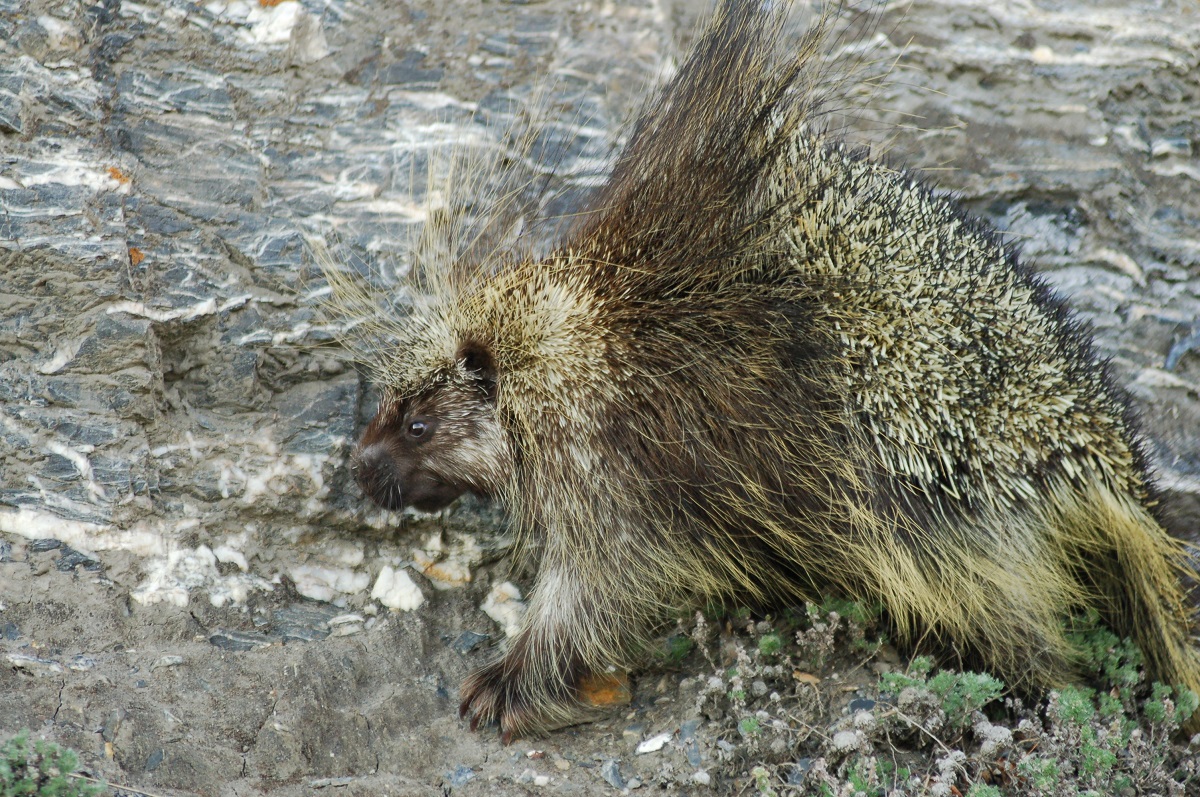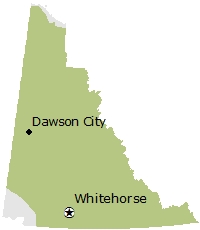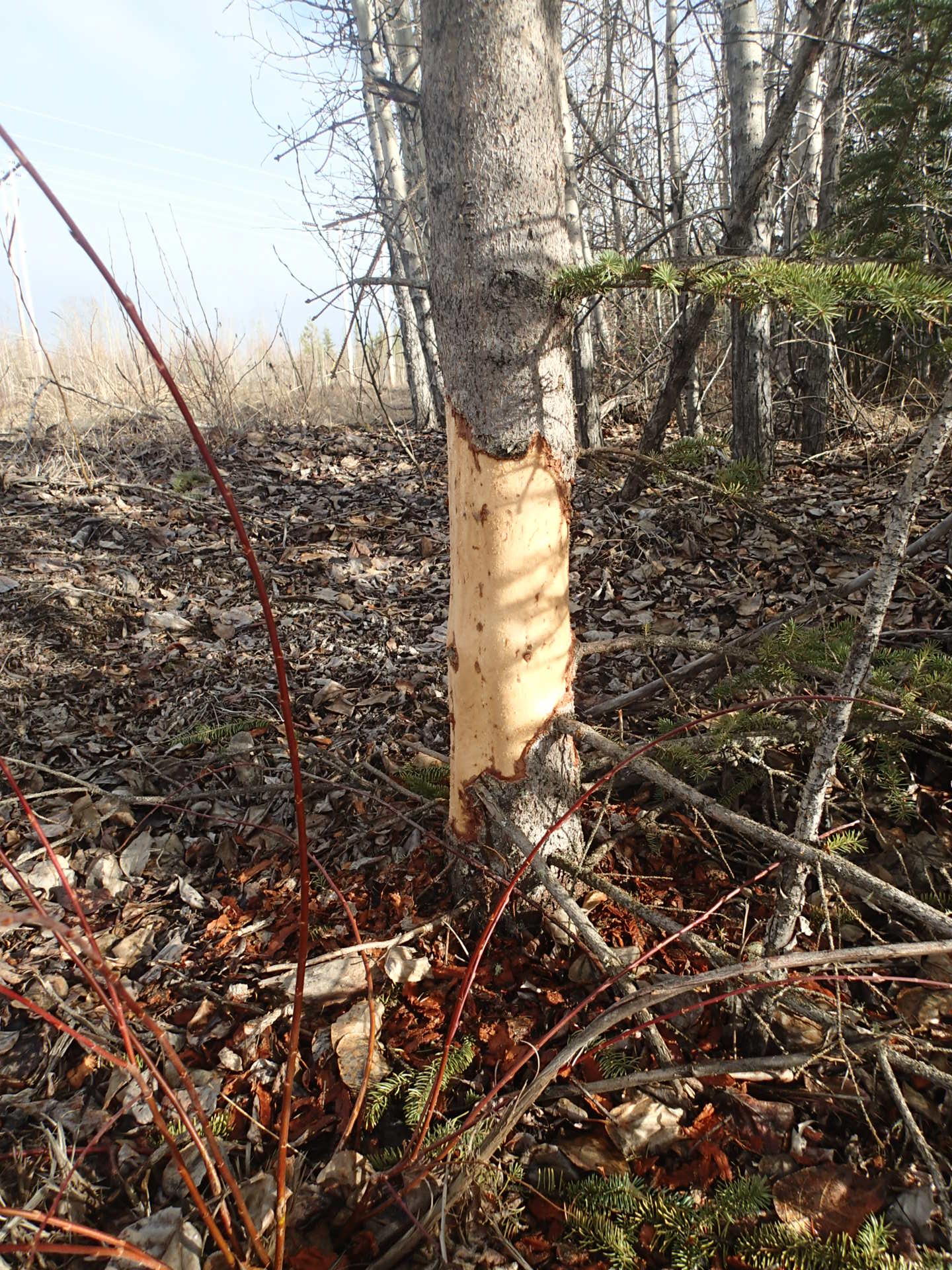
Name
- Common name: North American Porcupine
- Scientific name: Erethizon dorsatum
- Order: Rodentia
- Family: Erethizontidae
Also known as
Porcupine
Viewing opportunities
- Porcupines are easy to observe as they are slow to move away and are noticeable when climbing trees, which they frequently do.
- They are often spotted along Yukon roadsides, particularly in May and early June, because they move slowly, but frequently, making an encounter possible and easy to notice.
Description
- Large rodent-shaped body covered in sharp quills and long hairs.
- Long, yellow-tipped hair hides the quills that are kept close to the body when not in the defensive position.
- Long, curved claws.
Fast facts
- Length: 75 cm
- Weight: 10 kg
- Lifespan: 9 to 10 years
- Predators: Wolverines, wolves and Fishers
- Habitat: Boreal Forest
Conservation status
- Yukon: S5 (Secure)
- Global: G5 (Secure)
Yukon population estimate
Not determined.
Behaviour
Porcupines are slow moving animals and can usually be heard shuffling through the forest if you are nearby. When threatened, the porcupine arches its back and draws its quills erect. Though it cannot throw its quills, they dislodge easily when the porcupine thrashes its club-like tail. Barbs on a porcupine’s quills are not poisonous. However, if a quill penetrates an attacker, the barbs are able to swell from the surrounding skin moisture, forcing the quill in deeper which can kill if it causes an infection or the recipient, such as a wolf, to be unable to eat or drink.
Diet
Forbs, shrubs and trees, as well as antlers and bones for their mineral content.
Distribution

Sights and sounds

Porcupine track, hind: 4.3 x 3.3 cm.

Chewed bark.
Porcupines and people
- Quills are still used to make earrings and to decorate moccasins, jackets, baskets and boxes.
- Pet owners are advised to keep their dogs on a leash when in porcupine habitat to avoid an expensive trip to their veterinarian to remove quills.
- Porcupines have a penchant for salts and other minerals, sometimes leading them to chew on outhouses and other buildings and signs made of wood.